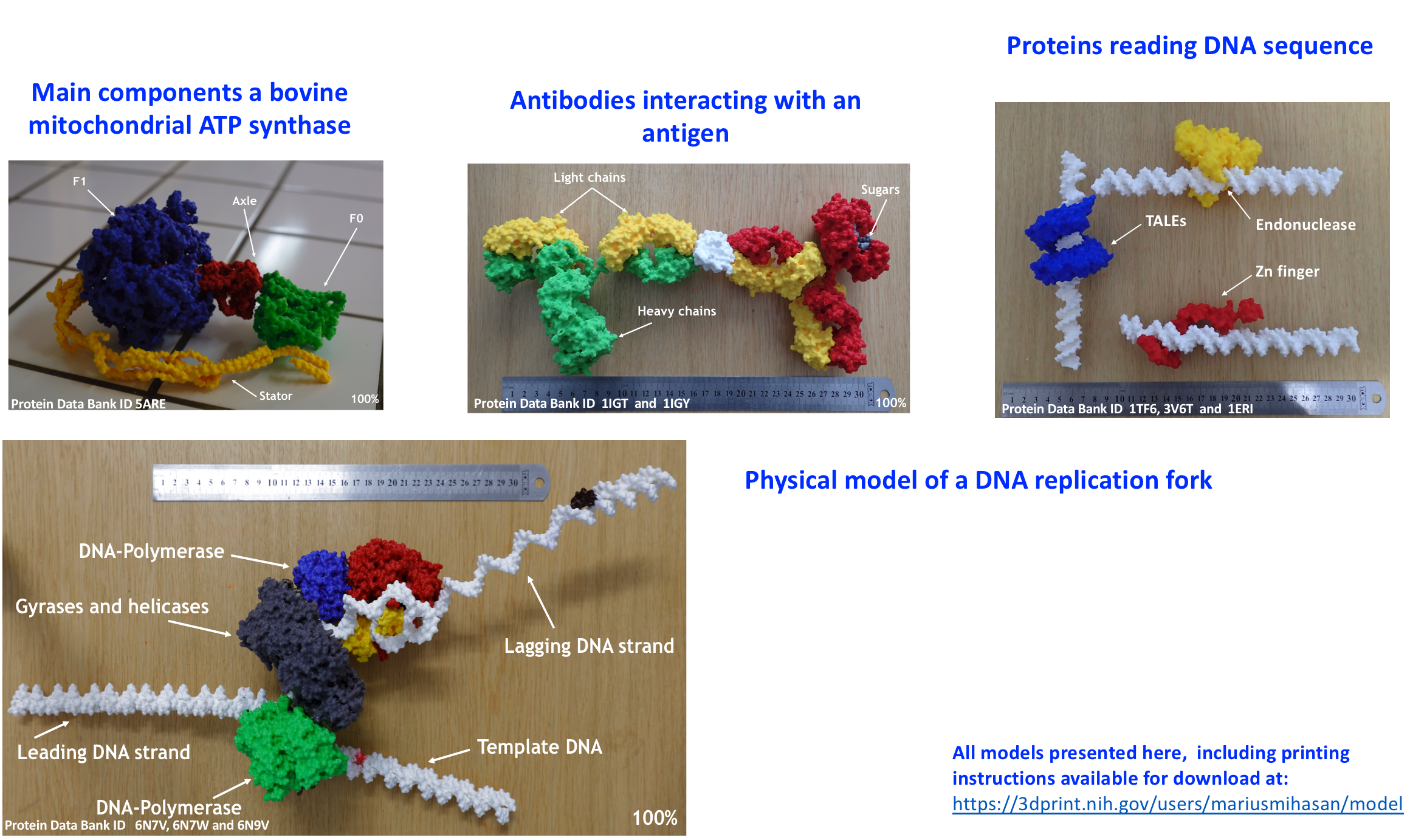3D printing as a cheap way of creating macromolecular models usable for teaching

Several molecular model systems were developed specifically to represent particular classes or groups of molecules and hence lack the flexibility of a universal solution. Three-dimensional (3D) printing could nevertheless provide such a universal solution, as it can be used to create physical models of biomolecular structures based on the teacher’s or demonstrator’s needs and requirements. 3D printing is an additive manufacturing process in which an object is built from a series of fused cross-sectional layers. The layers of material are fused in succession under computer control to make a three-dimensional physical object from a digital model. With 3D printing, molecules can be created in one piece directly from a digital 3D design file, greatly simplifying the process of fabricating molecular models.
Although technically difficult and expensive at its debut, the 3D printing field has nowadays reached a level of technology maturation and standardization that makes it easily applicable in a teaching environment. Fused Deposition Modeling (FDM), also referred to as Fused Filament Fabrication (FFF) is a 3D printing technology that relies on melting and extruding a thermoplastic filament layer by layer that is by far the cheapest and most readily available. FDM printers can be found under 500 euros, while 1 kg of thermoplastic filament such as polylactic acid (PLA) is priced at around 20-30 euros. The low cost and the ability to design and fabricate your own custom object makes FDM printing highly attractive for creating physical models of macromolecules in labs and universities, or even high schools from low-income countries. The models can be used for teaching large classes or can be given to students to interact in groups or individually, helping them to better understand key concepts in life sciences.
The general workflow for creating a macromolecule model to be printed using an FDM printer consists of 3 steps:
- generation of the computer model using UCSF Chimera;
- slicing the computer model using either the printer manufacturer provided software or free software such as Ultimaker Cura or PrusaSlicer;
- printing and cleaning up the model ;
A more detailed workflow is provided in the excellent work of Da Veiga Beltrame et al., 2017 and the accompanying guide by Mihasan, 2021 focusing on low cost.
Currently, we are using cheap FDM printers to produce custom physical models of macromolecules actively used for teaching. A couple of examples of such 3D printed models are presented in the figure below. All models generated so far, including instructions on how to print them are available on the NIH 3D Print Exchange Server.




Join the FEBS Network today
Joining the FEBS Network’s molecular life sciences community enables you to access special content on the site, present your profile, 'follow' contributors, 'comment' on and 'like' content, post your own content, and set up a tailored email digest for updates.